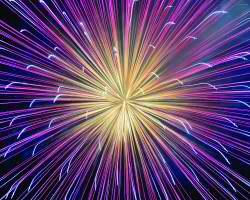Independence Day, July 4th, is a day of patriotic fervor. Everywhere you turn, there are parades, flags waving, fireworks exploding – it’s a sight as gleefully American as apple pie.
But wait a minute. Those red, white, and blue fireworks you’re watching don’t come from the United States. Their roots go back much farther, reaching back thousands of years and miles into the Middle East, India, and China’s Han period.
Historians debate over where this idea first came from, but they do agree on this: around 200 B.C., people in China roasted bamboo, which would explode with a large crack when it reached a certain temperature, using it at festivals as a way to make noise and scare off evil spirits.
A few hundred years later, Chinese alchemists searching for immortality somehow created gunpowder. Where you have a gunpowder and an exploding hollow tube, you have a perfect marriage for a certain type of firebug, so it seems only natural that at some point someone had the idea to put the gunpowder into the hollow tubes, which then must have exploded in a most gratifying way. Those were early firecrackers.
Over time, early scientists perfected the mixture of saltpeter, charcoal, and sulfur for the most spectacular controlled explosions (and rockets, and pyrotechnic displays.) As trade, travel, and commerce grew, gunpowder and fireworks made their way to Europe, where they were instantly popular.
In fact, they were so popular that they brought about an end to Europe’s medieval style of warfare by revolutionizing ways to blow up castles – and people. “Stay green” used to be a salutation among pyrotechnicians, alluding to a traditional figure named Green Man, a pagan archetype who was thought to embody spring (and who, some historians claim, was the basis of the Robin Hood stories.) But the Green Man also represented early European fireworks experts, who shot off explosives at the beginning of battles and led charges draped in green leaves and ivy to shield against errant sparks.
But fireworks were also an art form, especially in Italy, where chemists there managed to add colors to the displays by adding metals and minerals. Fireworks went from loud, frightening booms and brief flashes of light to today’s rainbow hues and delicate patterns.
Fireworks had been part of the New World since colonists brought them there in the 17th century, and since they had become so firmly entrenched in celebrations since, they were a natural addition to the festivities around the Declaration of Independence, and have been part of the July 4th celebrations ever since.















